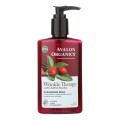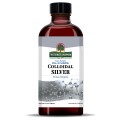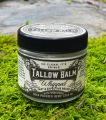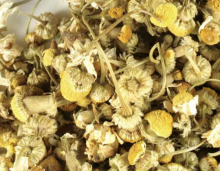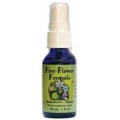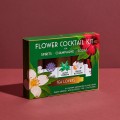 Loading... Please wait...
Loading... Please wait...- Home
- About Us
- Shipping, Returns & FAQ's
- Contact Us
-
For Your Information
- Canadian Customers Have a Choice if Shipping Via UPS
- Aura Cacia Homemade Aromatherapy Recipes
- Bella Nella Altered Art & Paper Crafts Blog
- Forms of Herbal Preparations
- Laundry Tips To Conserve Energy Blog from The Laundress
- The Story of Frontier Natural Products Co-Op
- Sovereign Silver Hydrosol and Aloe Protocol Stops Downward Spiral of Gut Dysbiosis
- Disclaimers
- Recommended Links
- RSS/Recent News
- The Story of Typhoon Housewares
- Reviews/Testimonials
- Raw Ingredients for Mfg
Chamomile Flower Bulk
Product Description
Although grown in Egypt, this is the same species of chamomile commonly referred to as German chamomile.
The whole flowers are used alone or in combination with other herbs and spices to make tea blends, bath bags or tinctures.
The powdered herb is ideal for encapsulation as a dietary supplement or to incorporate into lotions, creams and other skin care products.
Flavor is pleasant and mild. Pairs well with poultry, mild fish, apples, pears, vanilla, parsley, peppermint, lavender and black pepper.
German chamomile has a long history of use that dates to ancient Egypt, where the plant was dedicated to Ra, the god of the sun, ruler of the heavens and patron to the pharaohs. During the Middle Ages, chamomile was commonly grown as a kitchen herb and sweet-smelling groundcover to help mask the consequences of poor sanitation at the time. Similarly, chamomile was a popular strewing herb that was scattered on the floorboards of homes, churches and other public places.
Powdered chamomile is easily incorporated into foods and cosmetics. It can be mixed with honey and added to hot teas, or it can be made into a simple syrup. Combined with melted shea butter and beeswax, chamomile powder lends its restorative qualities to lip balms. Chamomile powder can also be blended with a carrier oil for use in massage and aromatherapy.
Uses
Chamomile blossoms are widely used is natural cosmetic preparations, including skin lotions, shampoo, hair rinses and soaps. Chamomile tea is one of the most popular herbal teas. The flowers are also be used in cooking, either eaten raw in salads, sautéed like dandelion or squash blossoms or simmered in soups and stews. The flowers are also used in baking cakes, cookies and breads.
Chamomile goes well with chicken, fish, wheat and oat bran, pureed or fresh fruit, honey, parsley, pepper, vanilla, cardamom, cinnamon, anise and cumin among other herbs and spices.
Chamomile is a common name used to refer to a number of daisy-like plants, many of which are members of the Asteraceae (formerly Compositae), which includes daisy and sunflower. The name comes from the Greek word "chamaimilon," which roughly translates to "earth apple" and is a tribute to the herb’s slightly apple-like scent. Popular varieties include German chamomile (Matricaria recutita) and Roman or English chamomile (Chamaemelum nobile).
Chamomile is one of the most popular herbs used to brew tea. In fact, a cup of chamomile tea is a carminative nervine traditionally served to counter an upset stomach or a case of frazzled nerves.
The herb is also used to produce a wide variety of personal care products, including natural perfumes. Infused in a carrier oil, such as apricot kernel or sweet almond, chamomile lends a light, fruity scent that blends well with floral herbs, such as geranium, rose, lavender, bergamot, clary sage, sandalwood and ylang-ylang.
For tea, Egyptian chamomile, which is M. recutita that is specific to the Nile River Valley region, is considered to be the most flavorful. However, this species may be referenced in the literature under the synonymous botanical names Chamomilla chamomilla, Chamomilla recutita or Matricaria suaveolens.
Similarly, various common names are applied, such as pineapple weed, scented mayweed, Hungarian chamomile and wild chamomile. In Europe, chamomile was also commonly called stinking mayweed because the plant exuded what the 17th century herbalist John Gerard described as "a naughty smell."
A strong, cooled, chamomile tea can be washed through your hair to lighten and highlight blonde locks.
Chamomile is an annual but if left alone to seed, this annual will re-seed itself into the soil, and you will have abundant growth again the following year. Blooms mid-summer; harvest young flowers the day they open. Sow in full sun. Ht 6-12in; spacing 6-9in.
Active Compounds
Chamazulene, apigenin, luteolin, quercetin, rutin, hyperoside.
Organic Chamomile is available in drop-dowm menu under the second "Other" Form options.
You Recently Viewed...
Currency Converter
Choose a currency below to display product prices in the selected currency.


